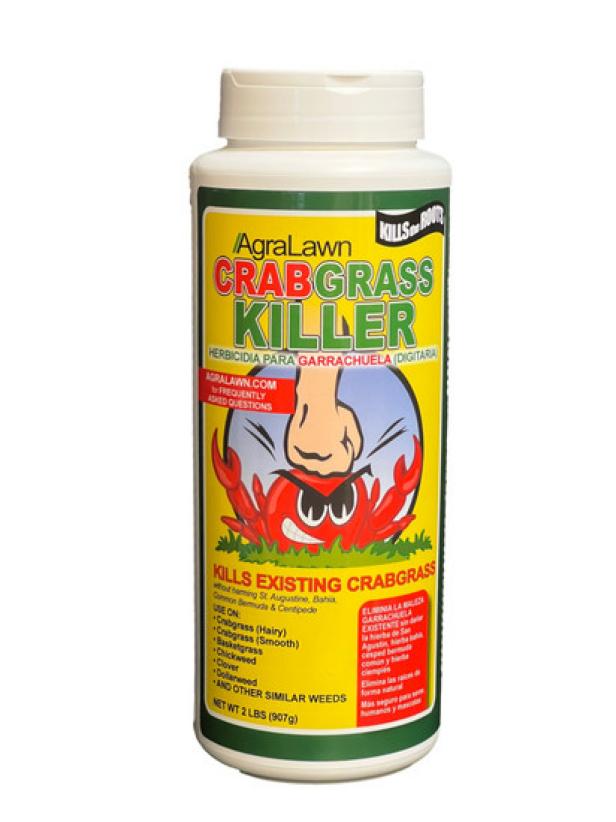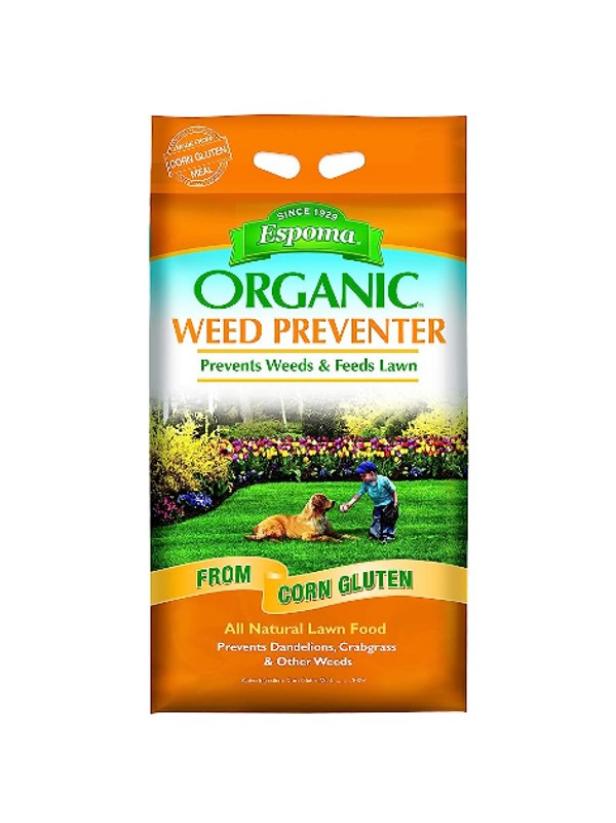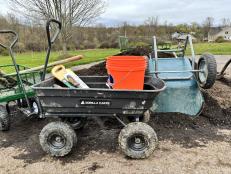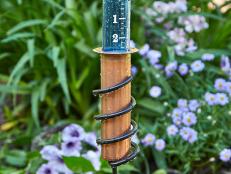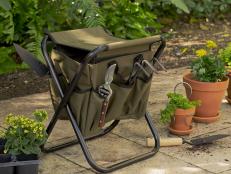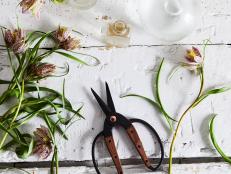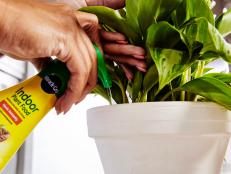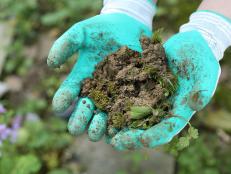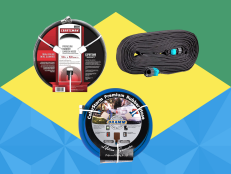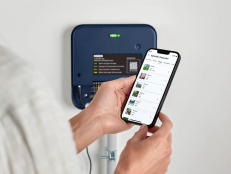The Best Crabgrass Killers, According to a Gardening Pro
Choose from organic and chemical options alike.
Our Top Crabgrass Killer Picks
- Best Overall: Scotts Halts Crabgrass & Grassy Weed Preventer
- Best Crabgrass Spot Treatment: Earth's Ally Weed and Grass Killer Concentrate
- Crabgrass Spot Treatment Runner-Up: AgraLawn Crabgrass Killer
- Best Spray Crabgrass Killer: Ortho WeedClear Lawn Weed Killer Ready to Spray
- Best Crabgrass Preventative: Preen Extended Control Weed Preventer
- Crabgrass Preventative Runner-Up: Espoma Organic Weed Preventer
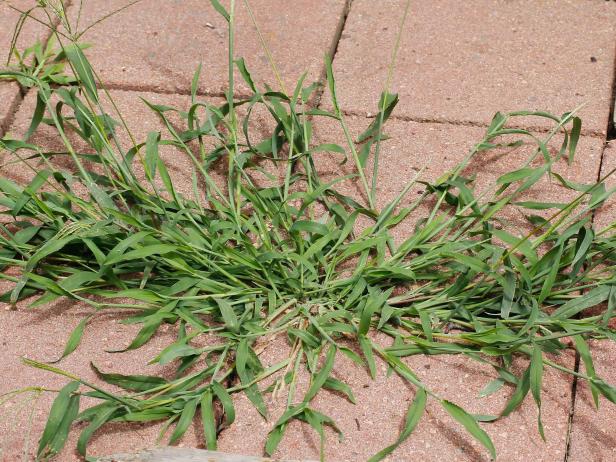
Image courtesy of Joseph Berger, Bugwood.org
When shopping for crabgrass killer, it’s important to survey your lawn to see where the pesky weed is popping up. Is it only in certain areas, or is it growing all over your yard? Once you determine where it’s spawning, you’ll be able to choose the best course of action to rid your yard of the weed. Crabgrass killer exists in various applications and forms: powder and sprays, and organic and chemical solutions. Additionally, there are crabgrass killer formulas designed for pre-emergence and post-emergence, so you can decide if preventing crabgrass growth or killing it on the spot is more beneficial.
To help you rid your yard of crabgrass, we chatted with garden expert and head of search at Epic Gardening, Jason Wilson. Ahead, discover his favorite crabgrass killer products, along with tips on how and where to use them.
How to Kill Crabgrass
Get tips for getting rid of crabgrass and preventing crabgrass from taking hold in your lawn.
When does crabgrass typically appear?
Like many plants, crabgrass thrives in the spring. “Since this grass will grow from prior seed once soil temperatures reach 55 degrees Fahrenheit, crabgrass seedlings will appear in the late winter and early spring months,” Wilson says. “This is when the plant is easiest to remove because its roots will not be as deep and it can easily be dug out by hand.”
What should you do after removing crabgrass?
Killing crabgrass isn’t as simple as plucking it from the ground and calling it a day. “Removing crabgrass seedlings should be quickly followed by re-seeding of your intended lawn,” Wilson says. “The quicker you can get the dead patches filled in by healthy lawn growth, the less likely that crabgrass will return.”
When seeding your lawn, Wilson says to pay attention to the seedlings you choose. “Follow removal with seeding of lawn grasses that grow naturally in your area,” he says. “You can occasionally use a lawn ‘patching’ product that provides quick-growing grass to fill in lawn holes, but some patching products may contain grass varieties that aren’t native to your region, so be careful to get the right kind.” Generally speaking, he says that most local stores will carry products appropriate for your particular region.
Pro Tip: If while seeding, you find that your grass isn’t growing or is coming in patchy — which is common of shady areas — Wilson says to consider swapping your grass with mulch or stone chips with landscape fabric underneath. “This reduces watering needs, and it can be a visually-appealing addition to your yard,” he says.
What’s the best way to prevent crabgrass from reappearing?
The key to preventing crabgrass from re-sprouting is diligence. “The more you remove before it produces seed, the less likely it is to reappear,” Wilson says. “However, crabgrass seeds can remain in the soil up to three years, so this is a long-term project and requires some dedication to completely remove the weed seeds.” For best results, he says to be especially vigilant along sidewalk, driveway and walkway edges. “As concrete or blacktop surfaces heat up quicker in the early part of the year, they provide a great location for early crabgrass seed germination,” he explains. “Use a good lawn edger and provide a slight gap between paved surfaces and turf to knock back weed growth.”
Best Overall: Scotts Halts Crabgrass & Grassy Weed Preventer
Scotts Halts Crabgrass & Grassy Weed Preventer is Wilson's top pick for chemical crabgrass killer. While there are a variety of ways to kill crabgrass organically, sometimes, the weed is so stubborn and pervasive that chemicals are required to get the job done. On the bright side, this formula is beloved for just how effective it is, with over 4,000 Amazon shoppers awarding it a 5-star review. The best part? The weed-fighting formula is said to take just one application to keep crabgrass at bay all season long.
In terms of application, the brand recommends not applying more than twice a year, and it's important to be mindful of your lawn care before and after doing so. "Don't use on newly seeded grass lawns until after the fourth mowing," the brand says. "On newly sprigged areas, wait five months before application. Don't plant grass seed for four growing months or sprig an area for five months after use of this product."
Best Crabgrass Spot Treatment: Earth's Ally Weed and Grass Killer Concentrate
If your crabgrass is only popping up in a few areas, Wilson suggests using a spot treatment. He recommends the Earth's Ally Weed and Grass Killer. The organic crabgrass killer is a powder made primarily of cinnamon bark and corn gluten meal. "Wet the crabgrass and sprinkle this on, thoroughly coating the grass clump," he instructs. "This post-emergence crabgrass treatment will kill off the weeds without impacting your lawn grass."
Pro Tip: Mowing your lawn regularly can help cut back on crabgrass growth. "Make sure that your lawn stays thick, avoid bare spots that could develop crabgrass and cut your lawn at the right height for your grass variety," Wilson says. "For most typical lawn grasses, the appropriate height is two to three inches. If you maintain it at that height and keep it regularly mowed, it’s unlikely that subsequent crabgrass will begin to grow and produce seed."
Crabgrass Spot Treatment Runner-Up: AgraLawn Crabgrass Killer
Wilson's other spot treatment recommendation is the AgraLawn Crabgrass Killer. Also effective on basketgrass, chickweed, clover, dollarweed and other similar weeds, this powder treatment is easy to sprinkle on to fight crabgrass growth on the spot. Bonus: Since it's made primarily with cinnamon bark, it smells great! Plus, it's safe for pets.
Best Spray Crabgrass Killer: Ortho WeedClear Lawn Weed Killer Ready to Spray
As effective as powder applications are, many people find that sprays are easier to use. With that in mind, the Ortho WeedClear Lawn Weed Killer Ready to Spray product is a great option. It's designed to thwart not only crabgrass but all broadleaf weeds and takes just one hour to settle in and become waterproof.
To apply, you just have to attach the canister to your garden hose and start spraying — simple as that!
Best Crabgrass Preventative: Preen Extended Control Weed Preventer
According to Wilson, the best way to manage crabgrass is to prevent it. "Once you have gone through the backbreaking effort to remove crabgrass by hand, you can use pre-emergent herbicides, like the Preen Extended Control Weed Preventer," he says. It's made with corn gluten meal, which Wilson says is the most popular organic choice. "Available as a large 25-lb bag of granulated meal as weed preventer, this cornstarch byproduct will slow or completely stop the growth of most weeds such as crabgrass and dandelions," he shares. "A 25-lb bag will cover 1250 square feet, and you’ll need to use it in both spring and fall to prevent weed growth."
Crabgrass Preventative Runner-Up: Espoma Organic Weed Preventer
Another organic corn meal preventative Wilson recommends is the Espoma Organic Weed Preventer. In addition to significantly cutting down on crabgrass (if not nixing it altogether), this preventative also works to make lawns look lush. It does so by amping up the nitrogen content on your lawn. Best of all, since it's organic, pets and little ones can play in the yard directly after application.

.-Battle-on-the-Beach-courtesy-of-HGTV.-.jpg.rend.hgtvcom.196.196.suffix/1714761529029.jpeg)








